Industry Insights: Shooting in the Middle
Cinematographer Nicola Daley ACS talks about the challenges of shooting a second block of a TV series in the UK and America.
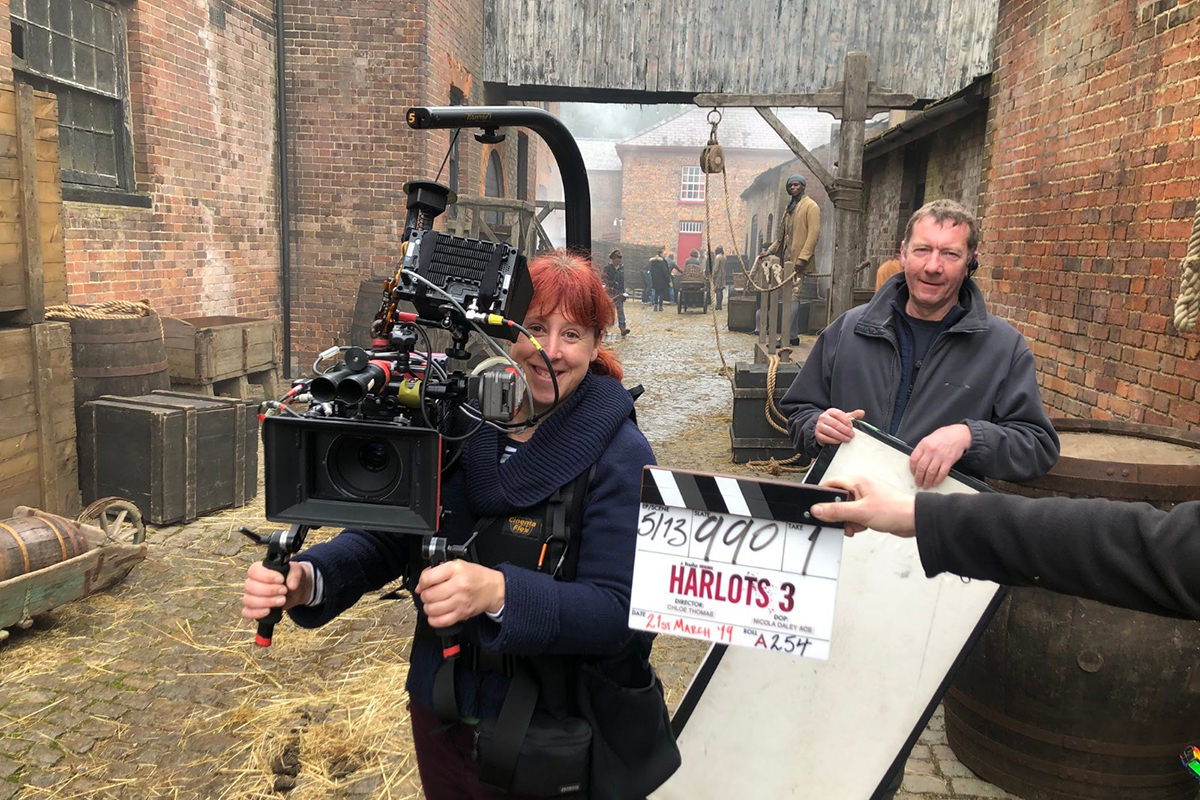 Nicola Daley ACS on the set of Harlots
Nicola Daley ACS on the set of Harlots
Members of the Australian screen sector share their career learnings in this Industry Insights series - a continuation of the Advice from Isolation series. Subscribe to Screen Australia’s newsletter for additions to the series.
A couple of years ago no-one would hire me to shoot episodic TV, I had been shooting for about 13 years and I kept coming up against this brick wall; “you haven’t shot TV, so you can’t shoot TV.” It was a very frustrating period in my career. I had shot numerous documentaries for television, several feature films, hundreds of shorts, commercials and music videos but breaking into television seemed like the hardest thing to do. Then producer Linda Micsko took a chance on me and asked me to meet writers Alison Bell and Sarah Scheller, to shoot the second series of The Letdown. I jumped at the chance to work on such a brilliant and hilarious series. Shooting The Letdown opened the doors of TV to me, and suddenly having Netflix written on my CV seemed to make all the difference. Since then I have shot several second blocks of differing television series. Here are some of things I’ve learned…
STARTING OUT
When a series starts the lead DOP will set the look of the show with the lead director. As a DOP who comes in to shoot the second block, which is often episodes 3, 4 and 5 (but can vary), I have to walk a line between working with the director of my episodes, and talking to the lead DOP, who has worked to set the visual style of the entire series.
In the UK the system slightly differs from the American way of working (more on that later), although I am sure every series is idiosyncratic. For The Letdown I shot every episode of the six-episode series. This actually doesn’t happen a lot, because as the DOP it becomes hard to prep with the new directors as they come on board for later episodes, because you are busy shooting earlier episodes.
WORKING WITH COLOUR AND TECH IN HARLOTS
I shot episodes 3, 4 and 5 for season 3 of Harlots for Hulu, and I am extremely proud of the work I did on that show. Harlots is set in London in the 1760s and the narrative revolves around two warring brothels. The show has a brilliant cast including Leslie Manville, Liv Tyler and Samantha Morton.
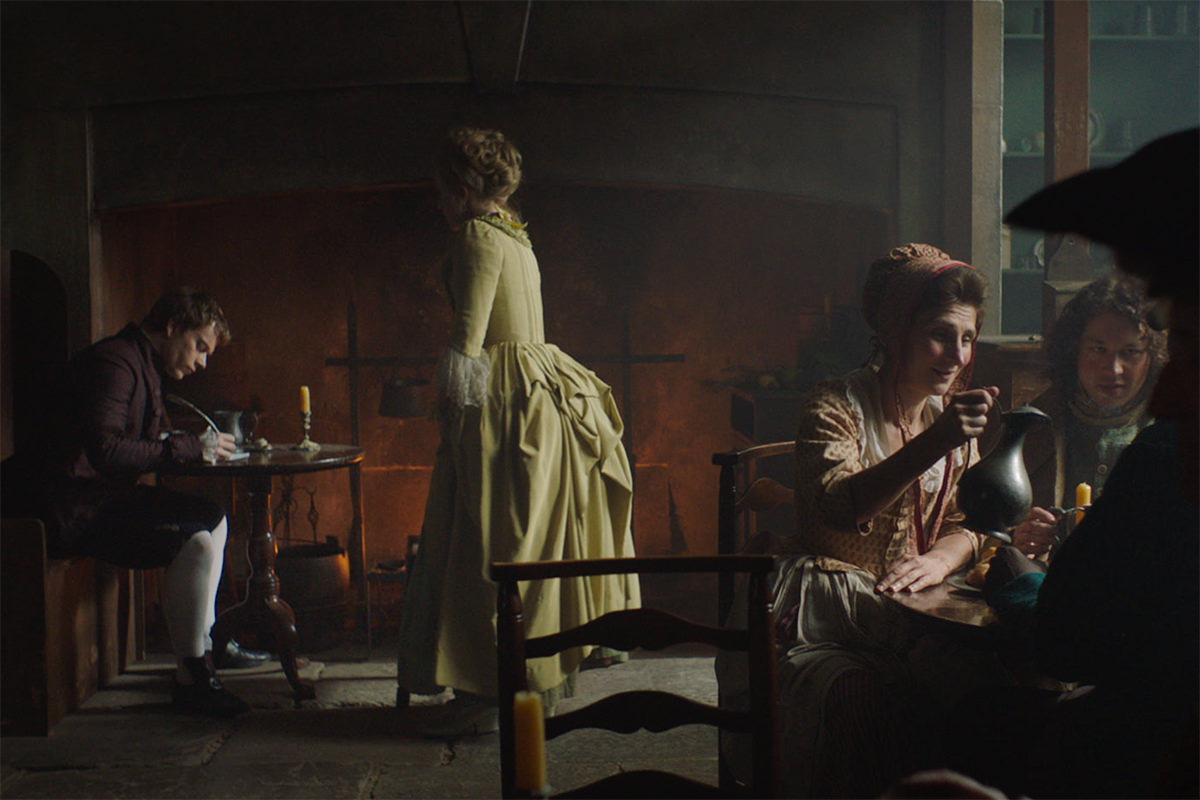 Harlots
Harlots
I had never shot a period drama before and so I was very excited when I got the job. David Rom was the lead DOP on season 3. So when I got the job, which actually involves getting approved by not only the producers, showrunners, the director but also by the lead DOP, I spoke with David about the look they had set for the first couple of episodes. The tightrope act then comes into play as the second block DOP. Walking that line involves keeping in the style of the show and yet impressing your vision and your director’s vision onto the episodes you have to shoot. Often there is leeway to inject your own thoughts and creativity onto the episodes you have to shoot, but in no way can you wildly go off on a completely different visual tangent. An example of this is how I was able to work with colour in Harlots. With Harlots, the look of the show involved energy and immediacy. The show shies away from the more traditional static period drama look, and embraces handheld and immediacy by following or leading characters into and out of scenes. But Harlots also embraces colour, which is one of my passions as a DOP. I love to use colour as a storytelling metaphor. The costumes - big full skirts, corsets and sometimes ginormous hats, are colourful, as are the sets in the show. Therefore I could put into practice my ideas of colour contrast, and how I can use this colour contrast to create depth and interest in the image. There are also so many tools and apps these days that a DOP can utilise to make their pre-production easier. I use Scriptation to write directly on scripts on an iPad Pro, as scripts are constantly changing, this helps with the amount of paper we can go through. In episodic TV the script changes can come in last minute so it’s a great way of keeping up to date. I also use Shot Designer to do camera layouts of complicated scenes with multiple characters and cameras. And I also do an extensive breakdown of the whole episode, so I can remember all notes associated with particular scenes in terms of grip, camera, filtration, art department notes, lighting and VFX.
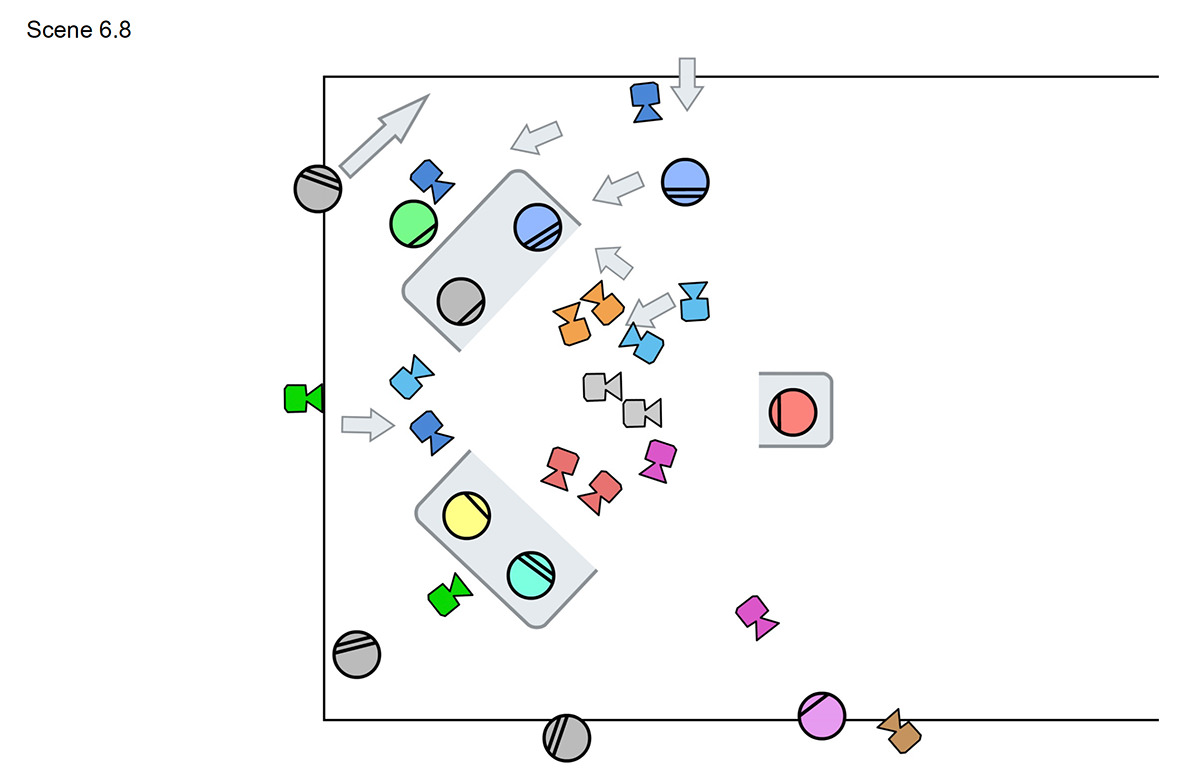 A scene setup for for two cameras using Shot Designer
A scene setup for for two cameras using Shot Designer
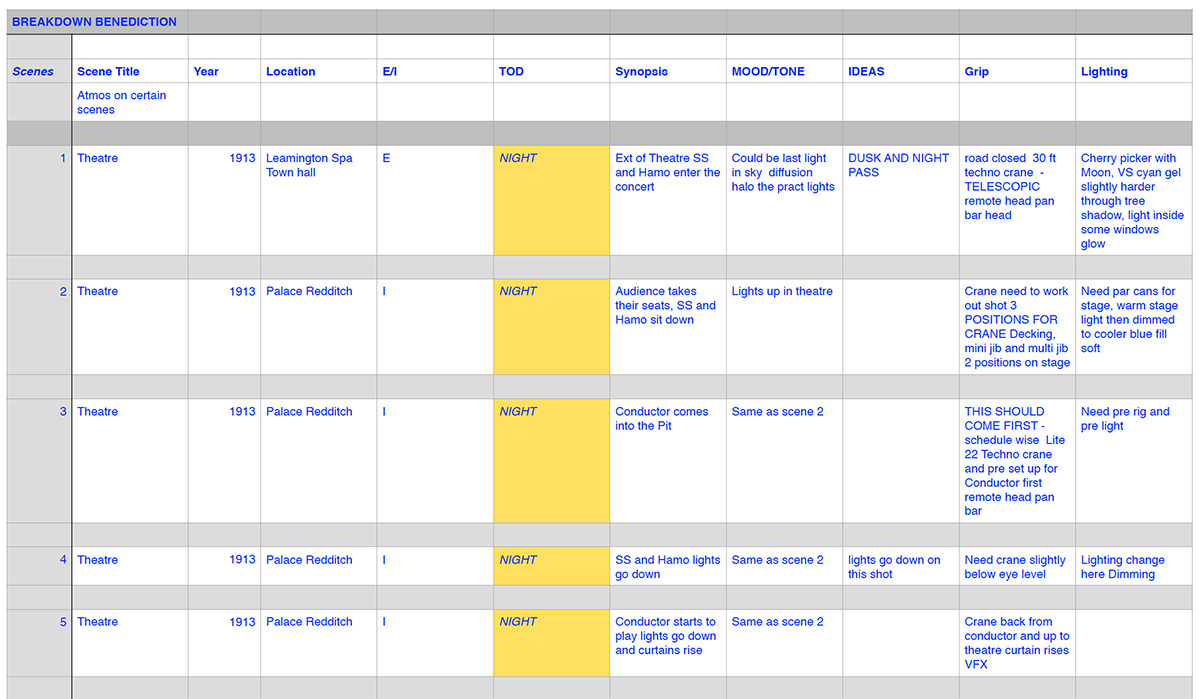 An episode breakdown
An episode breakdown
ADAPTING TO THE US SYSTEM WITH PARADISE LOST
I shot episodes 3, 4, 7 and 8 of the 10 part series Paradise Lost. Paradise Lost centres around a family in Mississippi, where Josh Harnett plays the prodigal son who returns to his hometown to run his dad’s newspaper business. His wife is a psychiatrist and as soon as she moves back to the town, the family skeletons begin to fall out of the closet and mysteries of the past start to unravel. The show also stars Nick Nolte and Barbara Hershey. Paradise Lost was my first job in America, and so I had to quickly adapt to the American way of working. I arrived whilst Alan Caso ASC, the lead DOP, was prepping his first two episodes of the show. Unlike the UK, where the lead DOP would be already shooting, Alan and I were able to collaborate in prep. He had done initial work on the look of the show, and this was done in conjunction with the producing director Romeo Tirone and the showrunners Rodes Fishburne and Arika Mittman. The Americans like a good meeting and so there were a series of these on topics including tone, concept, props, and locations, and it is a great way to get the whole crew on the same page. Comparatively, as a block 2 DOP in the UK I have not had to attend a concept or a tone meeting. The American system seemed to work well, so that different teams could all be on the same page about the same series, even though we were shooting different episodes with multiple directors. Alan had created a pitch document for the visual landscape of the series, which he had asked for my collaboration on, and had pitched to Paramount before I had arrived. Alan had also completed such things as: plotting the lighting with the gaffer for each of the studio sets; deciding on the camera and lens package; doing the lens tests; and booking the crew. Speaking of crew, on both the UK and American productions I have worked on the crew was inherited by me, so not chosen by me. It’s meant over the last two years I have learnt to walk into an existing crew and inspire them to work creatively and collaboratively with me. Often as the second block DOP you have to get along with a crew you have never met before, and often under very stressful and fast-paced schedules. This I have learnt is a real skill! I grew up in four continents by the age of eight, I was an only child and we moved around a lot; I now realise this set me up to be able to talk to anyone, anywhere, but it is a real management question - how do you get a team of grips, gaffers and a camera team to respect you and follow you when you have only just met! The other difference between the UK and Australian system and the American system is in the UK the gaffer is in charge of all lights and anything that shapes the lights, diffusion, flags etc. Whereas in America the key grip is in charge of all diffusion and flags and anything that isn’t the light itself. So I had to quickly learn to adapt to that system.
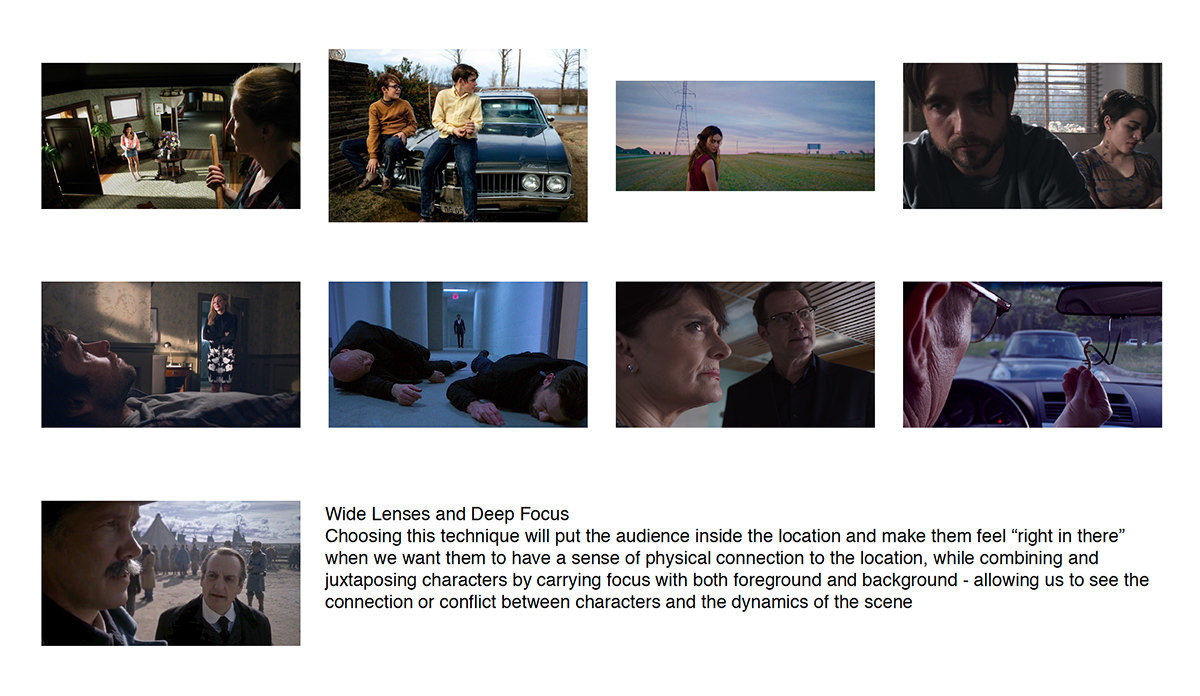 An example of the pitch document used to create the visual style of Paradise Lost
An example of the pitch document used to create the visual style of Paradise Lost
CHALLENGES AND COLLABORATION
Shooting middle blocks of differing TV series has taught me so many things about becoming a better DOP. Learning how to handle and work with and inspire a crew I have never met I feel, is a big achievement for me. Also coming in to match a certain style, and yet on the other side of the coin, to put your own stamp visually on a series is a challenge. And lastly, I love the challenge: of figuring out the perspective and point of view of a certain scene; and of collaborating with the director to see both how we can avoid shooting a scene conventionally, and instead coverage-wise, challenging ourselves to think outside the box.
- Watch season 3 of Harlots on SBS On Demand until the end of September 2020.
- Watch The Letdown season 2 on Netflix.

What to read next
Cinematographers from Australian films, television, documentary and online series share the camera and lens choices that brought the stories to life.
29 Jan 2020
Caris Bizzaca